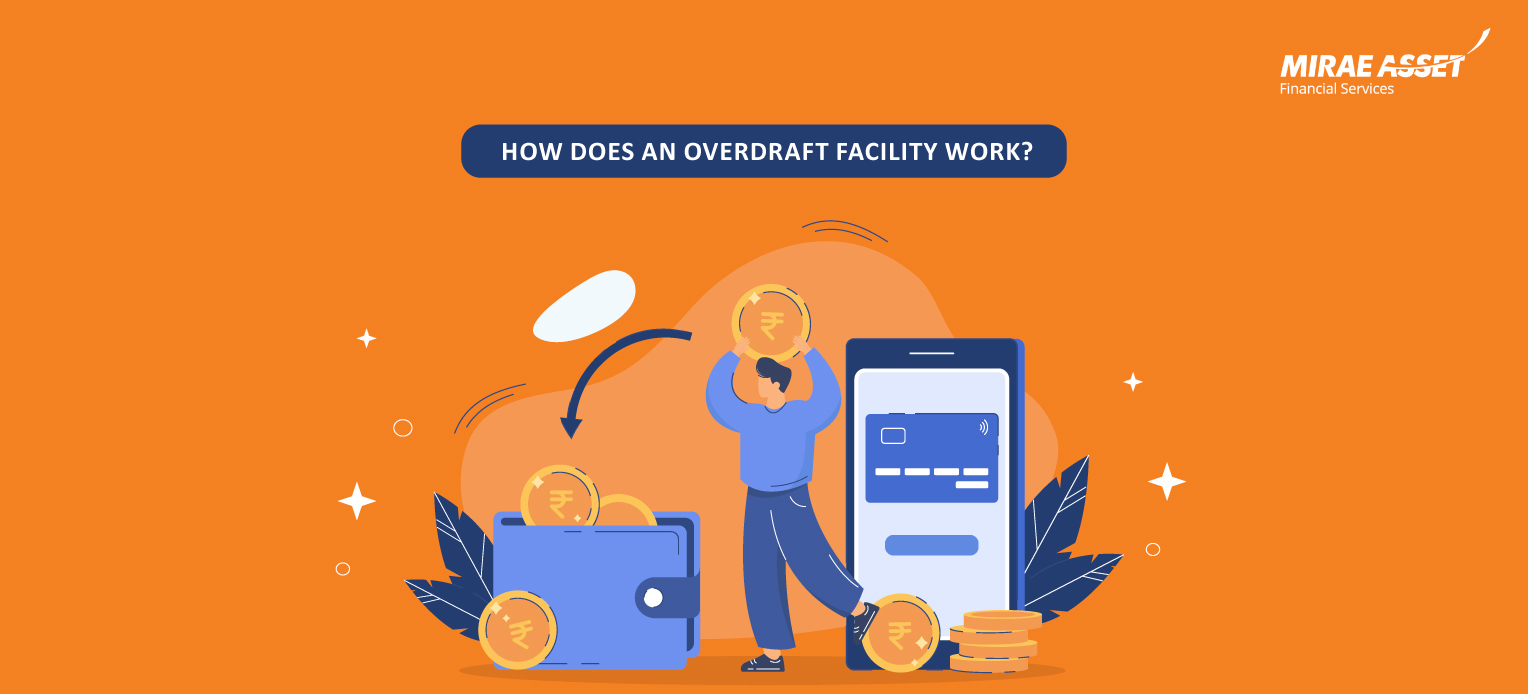How Does an Overdraft Facility Work?

While many business owners are well-acquainted with overdraft facilities, salaried individuals often overlook this option, focusing primarily on term loans. But, unexpected expenses or temporary financial gaps can arise anytime in life, making it hard to keep cash flow steady. This is where an overdraft facility proves invaluable. As a flexible financial tool offered by Non-Banking Financial Companies (NBFCs) and Banks an overdraft provides a safety net, ensuring you have access to funds when you need them most.
Understanding the Basics
An overdraft facility is essentially a credit line extended to individuals or businesses by Financial Institutions like Banks and NBFCs, allowing them to withdraw funds from their account and repay the withdrawn funds or a part of it anytime. This provides immediate access to funds up to a pre-approved limit.
Key Features and Benefits
- Flexibility: Unlike traditional loans where you receive a lump sum, an overdraft lets you withdraw as needed, up to your approved limit. You pay interest only on the amount you use, not the entire limit.
- Cost-Effective: Interest is typically charged on the outstanding balance daily and paid monthly, making it a cost-effective option for short-term financing compared to credit cards or personal loans.
- Immediate Access: Funds are readily available, providing quick solutions for emergencies or opportunities that require prompt financial action.
- Revolving Credit: As you repay the borrowed amount, your available credit replenishes, making it a revolving credit facility that adapts to your changing financial needs.
- No Fixed EMI: Unlike loans with fixed monthly payments, you have the flexibility to repay the overdraft at your convenience.
Types of Overdraft Facilities
Overdraft facilities can broadly be categorized into two types. Unsecured overdraft facilities are offered to businesses and individuals based on their credit history, repayment capabilities and other parameters. While secured overdraft facilities are made available when a security is pledged by the borrower. The borrower may pledge their mutual funds, shares, property, fixed deposits, insurance or shares. Typically, the interest and other charges levied on a secured OD is lower than unsecured one.
Working of an Overdraft Facility with an example
Let’s assume Miss A pledges her mutual funds worth Rs. 10,00,000 and avails an overdraft facility with a limit of Rs. 4,50,000 at an LTV of 45%. She makes a withdrawal of Rs. 1,50,000 for her business expenses today and a withdrawal of Rs. 50,000 after 10 days. The interest is charged only on the borrowed amount of Rs. 1,00,000 for 10 days and later on, it is charged on the entire borrowed amount of Rs. 1,50,000 (1,00,000 + 50,000).
Miss A receives a payment of Rs. 1,00,000 from her client, so she repays the amount on the 20th day to the bank. Her total outstanding is reduced to Rs. 1,00,000 and hereon she is charged interest only the outstanding amount.
On the 30th day, Miss A decides to depledge mutual funds worth Rs. 2,00,000. So the value of pledged mutual funds is revised to Rs. 8,00,000 and the loan limit is revised to Rs. 3,60,000 (45% LPA).
| Value of Pledged Mutual Funds | Eligible Loan Limit | Utilized Amount | Available Limit | Accumulated Interest (@10.5% p.a.) | |
|---|---|---|---|---|---|
| Day 1 | Rs.10,00,000 | Rs.4,50,000 | Rs.1,50,000 | Rs.3,00,000 | Rs.0 |
| Day 10 | Rs.10,00,000 | Rs.4,50,000 | Rs.2,00,000 | Rs.2,50,000 | Rs.432 |
| Day 20 | Rs.10,00,000 | Rs.4,50,000 | Rs.1,00,000 | Rs.3,00,000 | Rs.1,007 |
| Day 30 | Rs.8,00,000 | Rs.3,60,000 | Rs.1,00,000 | Rs.2,60,000 | Rs.1,295 |
She will have to repay only the interest amount of Rs.1,295 at the end of the month, she has the freedom to repay the principal anytime.
If Miss A would have availed a Term Loan of Rs.4,50,000 instead of an Overdraft Facility, she would have been charged interest on the entire loan amount. With an overdraft facility she got the flexibility to borrow the amount that she needs and repay the amount as per her convenience.
When does an overdraft facility come in handy?
- Emergency Expenses: Medical bills, car repairs, or home renovation costs.
- Business Cash Flow: Entrepreneurs use overdrafts to manage irregular income or unexpected business expenses.
- Seasonal Expenses: Covering holiday spending or educational costs.
Conclusion:
In conclusion, an overdraft facility is a versatile financial tool designed to provide immediate access to funds when you need them most. Whether for unexpected expenses, business cash flow management, or seizing opportunities, it offers flexibility, convenience, and cost-effectiveness. By understanding how it works and using it responsibly, you can effectively manage your cash flow and navigate financial challenges with confidence.
Learn more about overdraft facility against mutual funds here.
